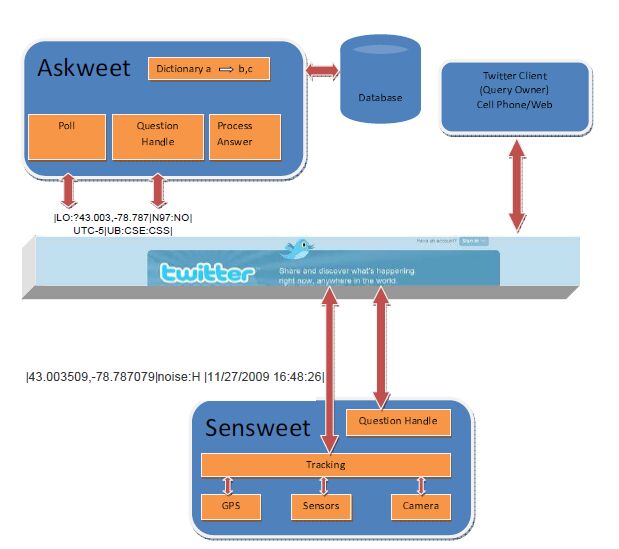
|
Crowd-Sourced
Sensing and Collaboration Using Twitter Problem:
Despite the availability of the sensor and smartphone devices to fulfill the
ubiquitous computing vision, the state-of-the-art has gap due to lack of
infrastructure to task/utilize these devices for collaboration and
coordination. We propose that Twitter can provide an “open” publish-subscribe
infrastructure for sensors and smartphones, and pave the way for ubiquitous
crowd-sourced sensing and collaboration applications. Approach:
We design and implement a crowd-sourced sensing and collaboration over
Twitter, and showcase our system in the context of two applications: a
crowd-sourced weather radar, and a participatory noise-mapping application.
Our system is composed of three components namely Askweet, Sensweet and
Twitter clients. Sensweet is a smartphone application that publishes
real-time readings from the integrated-sensors to Twitter. Askweet is a
program that listens to its Twitter account for questions and processes the
questions and aggregates the replies it receives to these questions from
Sensweet and the Twitter clients. Contributions:
We present an analysis of our real-world Twitter experiments to give insights
for the feasibility of our approach. We find that although we do not offer
the user any incentives to reply, our queries receive at least 15% reply
ratios. Surprisingly, 50% of the total replies arrive within the first 10
minutes of our query, and 80% of the replies arrives within the first 2
hours, enabling low latency operations for crowd-sourcing applications. Our
experiments also found that consistently the majority of replies come from
users that access Twitter from their mobile phones.
Publications: Murat Demirbas, Murat Ali Bayir, Cuneyt Gurcan Akcora, Yavuz Selim Yilmaz, Hakan Ferhatosmanoglu, "Crowd-Sourced Sensing and Collaboration Using Twitter". (accepted to WOWMOM 2010) pdf |